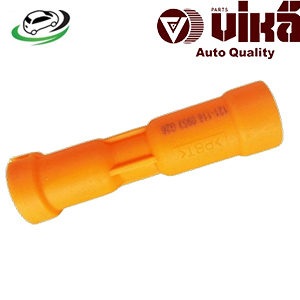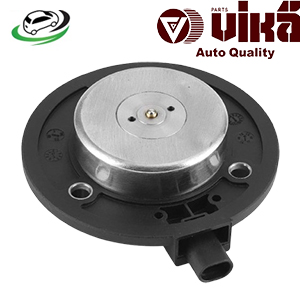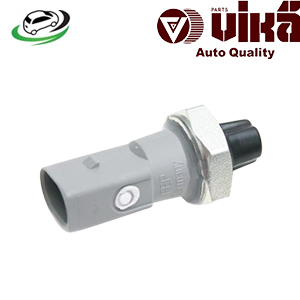-6%
Get AUDI B8 A4 V6 3.2L/ AUDI B8 A5 V6 3.2L/ AUDI C6 A6 V6 3.0T Oil Pressure Sender 06E919081C
An oil pressure sender, also known as an oil pressure sensor, is a vital component in monitoring and maintaining the health of a vehicle’s engine. Its primary function is to measure the oil pressure within the engine and relay this information to the driver or engine control module (ECM) via a gauge or warning light. Oil pressure is crucial for proper engine lubrication, cooling, and the overall longevity of engine components. Without adequate oil pressure, engines are prone to overheating, friction-related damage, and eventual failure.
In this guide, we will explore the function of oil pressure senders, their benefits, how to maintain them, and troubleshooting common issues.
1. What is an Oil Pressure Sender?
An oil pressure sender is an electrical sensor responsible for measuring the oil pressure in a vehicle’s engine. It converts the mechanical pressure of the oil into an electrical signal, which is then sent to either a gauge or warning light on the dashboard. This real-time data allows drivers to monitor oil pressure and take preventive action if necessary, preventing catastrophic engine damage.
Oil pressure senders typically consist of:
- Pressure Sensing Element: This part is in direct contact with the engine oil and measures its pressure.
- Electrical Connector: It transmits the measured pressure as an electrical signal to the gauge or ECM.
- Threaded Body: The sender is screwed into the engine block, usually near the oil filter or oil pump, for direct contact with the pressurized oil.
2. How Does an Oil Pressure Sender Work?
The oil pressure sender operates by detecting the oil pressure inside the engine’s lubrication system and converting it into an electrical signal. Here’s how it works in more detail:
a. Sensing Pressure
The pressure sensing element within the sender is usually a diaphragm or piezoelectric sensor. As engine oil circulates, the pressure forces the diaphragm to move, creating a mechanical deformation that can be measured.
b. Electrical Signal Transmission
The deformation of the diaphragm alters the electrical resistance within the sender. This change in resistance is used to generate a voltage signal that corresponds to the oil pressure level. The sender then transmits this signal to either an analog gauge or the engine control module (ECM).
c. Dashboard Indicator
For vehicles with an analog gauge, the sensor’s voltage signal causes the needle on the oil pressure gauge to move, indicating the pressure. In vehicles with digital displays, the ECM processes the signal and relays the pressure value or triggers a warning light if the pressure is too low.
3. Types of Oil Pressure Senders
Oil pressure senders vary depending on the type of vehicle and the method of pressure display. The most common types include:
a. Analog Oil Pressure Sender
This is the most traditional type, where the oil pressure reading is displayed on an analog gauge. The sender generates a voltage signal that moves the needle on the gauge, displaying the oil pressure level.
b. Digital Oil Pressure Sender
In modern vehicles with digital dashboards, oil pressure senders transmit signals directly to the ECM. The ECM then processes the data and displays it as a digital readout on the dashboard.
c. Warning Light Oil Pressure Sender
Some vehicles don’t have a gauge but rely on an oil pressure warning light. In these systems, the sender activates the light when oil pressure falls below a certain threshold. This type of sender functions as a simple on/off switch, triggering the light when pressure is low.
4. Importance of Monitoring Oil Pressure
Maintaining proper oil pressure is critical for several reasons:
- Lubrication: Adequate oil pressure ensures that engine parts, especially the moving components like crankshafts and camshafts, are well-lubricated. This prevents metal-on-metal contact, reducing wear and friction.
- Cooling: Oil helps to remove excess heat generated during engine operation. Without proper oil pressure, the cooling efficiency is compromised, leading to overheating.
- Contaminant Removal: Engine oil also helps to carry away contaminants, such as metal particles and debris, from engine components. Sufficient oil pressure ensures that oil circulates efficiently, removing contaminants and preventing buildup.
5. Common Symptoms of a Faulty Oil Pressure Sender
A malfunctioning oil pressure sender can cause inaccurate readings, which may lead to engine damage if left unchecked. Here are common symptoms of a faulty oil pressure sender:
a. Erratic Oil Pressure Readings
If the oil pressure gauge fluctuates wildly or shows inconsistent readings, it may indicate a faulty sender. This could be caused by a loose electrical connection or internal damage to the sender.
b. Oil Pressure Warning Light
A malfunctioning oil pressure sender can cause the warning light to come on even if the oil pressure is within the normal range. This can lead to unnecessary panic or, worse, ignoring the warning when there is an actual oil pressure issue.
c. Zero Pressure Reading
If the oil pressure gauge shows zero pressure but the engine is operating normally, it’s likely the oil pressure sender is defective.
d. Gauge Pegged at Maximum
Another symptom is the oil pressure gauge constantly showing maximum pressure, regardless of the engine’s actual oil pressure. This indicates an electrical fault within the sender.
6. Benefits of an Oil Pressure Sender
Oil pressure senders are crucial for engine protection, offering multiple benefits:
a. Prevents Engine Damage
By constantly monitoring the oil pressure, the sender helps prevent engine damage. Low oil pressure can cause severe engine wear, overheating, and failure, so an accurate reading allows for quick intervention.
b. Promotes Engine Efficiency
When oil pressure is kept within the optimal range, the engine runs more efficiently. Proper oil circulation ensures minimal friction and heat buildup, improving fuel efficiency and performance.
c. Early Warning System
The oil pressure sender acts as an early warning system for potential oil-related problems, such as leaks, oil pump failure, or worn engine components. By catching these issues early, costly repairs can be avoided.
7. Maintaining the Oil Pressure Sender
Proper maintenance of the oil pressure sender ensures its longevity and reliable function. Here are some maintenance tips:
a. Regular Oil Changes
Maintaining clean engine oil prevents blockages in the oil passages and ensures the sender receives accurate pressure readings. Dirty or contaminated oil can cause false readings or clog the sensor.
b. Inspect Electrical Connections
Ensure the electrical connector on the sender is clean and free of corrosion. A loose or corroded connection can cause inaccurate readings or a complete failure of the sensor.
c. Monitor for Leaks
A leaking oil pressure sender can cause a drop in oil pressure and trigger the warning light. Regularly inspect the sender and surrounding area for signs of oil leaks. Replace any worn-out seals or gaskets promptly.
d. Replace When Necessary
Over time, oil pressure senders can wear out or become damaged due to heat, pressure, and contamination. If the sender is providing inaccurate readings or malfunctioning, it’s best to replace it.
8. Troubleshooting Common Oil Pressure Sender Issues
a. False Low Pressure Readings
If the sender indicates low oil pressure but the engine oil level is adequate, there may be a wiring issue or the sender itself may be faulty. Verify the oil level and inspect the wiring before replacing the sender.
b. Gauge Not Responding
If the oil pressure gauge isn’t responding, check the sender’s electrical connection. A loose or disconnected wire could be preventing the signal from reaching the gauge.
c. Persistent Warning Light
If the oil pressure warning light stays on even after replacing the sender, the problem may lie in the oil pump or pressure relief valve. Have a mechanic inspect the engine’s oil system for any internal issues.
Conclusion
The oil pressure sender is an essential component for monitoring and maintaining engine health. By keeping track of oil pressure, it helps prevent engine damage, improves efficiency, and provides early warnings of potential problems. Regular maintenance, such as checking electrical connections and performing timely oil changes, will ensure the sensor works reliably. Understanding how the oil pressure sender functions and troubleshooting common issues can save you from costly engine repairs and prolong the life of your vehicle.
Follow us on Facebook for more parts.




Reviews
Clear filtersThere are no reviews yet.